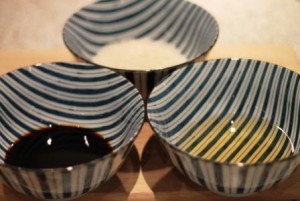In Scandinavia, salmon is the most sought fish for sushi.
Salmon is a local fish that lives in Denmark, Norway, Sweden, the Faroe Islands, Iceland and Finland. The quality of salmon in Scandinavia is very good.
The Faroe Islands are known for producing the world’s best salmon.
Faroese salmon are farmed in the sea, where they grow under the best possible conditions. The salmon also gets fantastic feed, which gives the tasty salmon steaks.
The other Nordic countries also produce very fine, high-quality salmon. In Scandinavia, salmon is produced in large quantities. Freshly caught salmon come to Denmark every single day.
For consumers, it is wonderfully easy to get hold of the fresh, tasty and delicious salmon at the many fish shops in Denmark.
In the Japanese sushi course for beginners, you will learn the salmon that are best suited for sushi-
_
Zoë has lectured and held sushi courses for A. P. Moller – Maersk, Hugo Boss Nordic, Novo Nordisk, Novartis, Velux, Gorrissen Federspiel, Beierholm revision, Elbek & Vejrup and many more.









